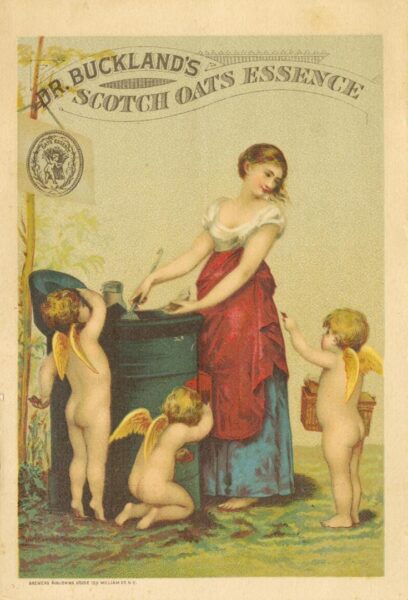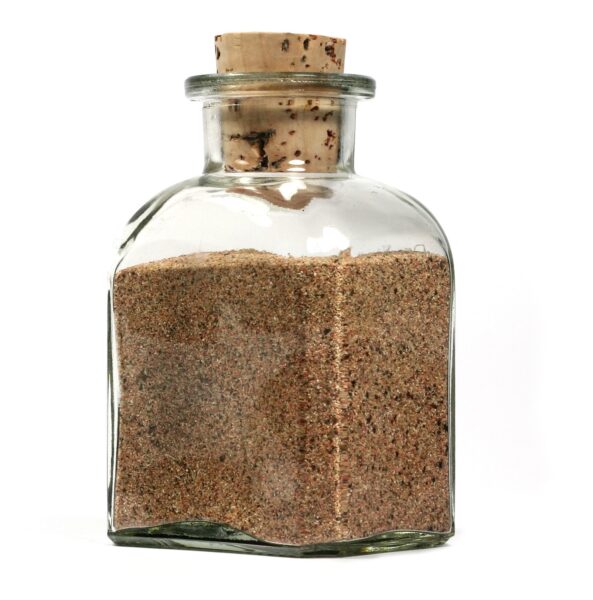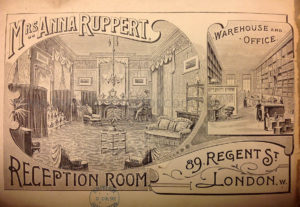
DELICACY of Complexion.—The incomparable BLOOM of NINON DE L’ENCLOS, superior to any thing yet discovered for rendering the skin soft, smooth, and beautiful in the extreme. Its wonderful effects in removing freckles, morphews, worms, &c. justly entitle it to that preference so long bestowed on it by the most elegant beauties in this kingdom. It is particularly recommended for the hands and arms, bestowing on them a delicacy and whiteness, superior to any thing vended for similar purposes.—Sold only by Mr. Golding, 42, Cornhill; Mr. Overton, 47, Bond-street; Mr. Wright, Wade’s Passage, Bath; and Miss Grigson, Liverpool; in bottles 4s. each.
Source: The Times, 20 June 1805
——————————————————————————————————————-
The story behind the Bloom suggested it had been introduced to Britain in 1782 by Mademoiselle Louisa Pigout of Paris, who appointed London agents to reach the British market. She credited the product for the beauty of famed 17th-century writer and courtesan Anne (nicknamed Ninon) de L’Enclos, who had handed down the recipe. Another of Pigout’s claims was that the Queen of France, Marie Antoinette, would use no other cosmetic.
A 1784 advert gave detailed instructions for use:
Let the skin be thoroughly cleansed with Almond Washball, or oatmeal. Being wiped perfectly dry, shake the bottle exceeding well, and immediately pour a little of the fluid into a cup, and with a fine cloth rub it on the skin, more or less, as you please, till it is quite absorbed. Lastly, gently wipe the face with a soft flannel. Two or three bottles, and frequently less, will evince the pre-eminence of its virtues, beyond the possibility of a doubt.

If Ninon (right) really employed this preparation, she did well to survive to the age of 84. It comprised almond emulsion, essence of lavender and white lead.
White lead (lead carbonate) had been used in cosmetics since antiquity. In Ninon’s time and well into the 18th century it commonly took the form of ceruse – a mixture of the compound with vinegar. In 1756, Adam Fitz-Adam’s periodical The World noted that women who used ceruse
doe quickly become withered and grey-headed, because this doth so mightily dry up the natural moysture of their flesh: and if any give not credit to my report let them but observe such as have used it, and I doubt not but they will easyly be satisfied.
This was positively complimentary compared with Fitz-Adam’s description of women who used corrosive sublimate, but I’ll keep that for another time. In 1786 a correspondent to the Daily Universal Register (the forerunner of The Times) was equally disapproving of cosmetics in this satirical ‘receipt for making a fashionable lady’:
…viz. two pounds of cork, five yards of whalebone, one pound of hair, six pounds of wool or cotton, two drams of white lead, and half a dram of rouge—these, with a proper quantity of bones for the skeleton, and flesh and blood for the muscles, with the skin of a mouse for eye brows, a pound of powder, and half a pound of pomatum, will compleat the business.
The Monthly Gazette of Health – a publication I am very fond of but accept as rather subjective – estimated the cost of ingredients for a bottle of ‘Bloom’ as 1d, and surmised that it was made in London, not Paris.
‘Bloom of Ninon,’ was the name of a Victorian face powder too, but this was a completely different product, consisting of precipitated chalk, talc, bismuth subcarbonate, zinc oxide and starch, perfumed with orris and rose essences. The use of lead cosmetics, however, continued throughout the 19th century, particularly in the theatre. In the 1850s, a writer in the Medical Times and Gazette described the case of a clown suffering from colic as a result of using lead carbonate mixed in lard. On his recovery he planned to continue using it because nothing else would create the desired whitening effect, but was eventually persuaded to convert to zinc oxide.
Medical jurisprudence writer Alfred S. Taylor described the symptoms of chronic lead poisoning as follows:
There is first pain, with a sense of sinking commonly in or about the region of the umbilicus. Next to pain there is obstinate constipation, retraction of the abdominal parietes, loss of appetite, thirst, foetid odour of the breath, and general emaciation. The skin acquires a yellowish or earthy colour, and the patient experiences a saccharine, styptic, or astringent taste in the mouth. A symptom of a peculiar nature has been pointed out by the late Dr. Burton and others (Med. Gaz. xxv. 687), namely, blueness of the edges of the gums, where these join the bodies of the teeth : the teeth are of a brownish colour.
Although the idea of historical ladies sacrificing their lives to vanity makes a good story, confirmed cases of death by cosmetics were few and far between. Reported instances of lead poisoning usually involved accidental ingestion via contaminated foodstuffs or water, or prolonged exposure to lead in the trades of house-painting and colour grinding – the symptoms of chronic poisoning were commonly known as painter’s colic.
Even so, it was not a great idea to put lead on your face. As the Monthly Gazette said of the Bloom of Ninon in 1819:
The repeated application of lead to the skin of the face, instead of animating the countenance, would assuredly, by paralysing the nerves, render it inanimate.
Therefore, it was nothing like any beauty treatments that are available today.



New post on The Quack Doctor – The Bloom of Ninon: http://thequackdoctor.com/index.php/the-… #history
RT @quackwriter
New post on The Quack Doctor – The Bloom of Ninon: http://thequackdoctor.com/index.php/the-… #history
* good idea at the time but:18/19C botox?
Thrilling stuff….and who knew they had Botox then, as you (carefully don’t) say?! Many thanks, most enjoyable :>
Thanks Colleen – glad you enjoyed it! I often find that the modern equivalents of the products I blog about are much more bizarre than the historical versions.
What a fantastic blog! A whole site filled with quackery. I was just researching Maria Gunning – 18th century poster child for death by cosmetics. The ceruse got her.
Say, have you written about Aqua Toffana yet? That was the 17th century makeup made from arsenic that supposedly caused some husbands to drop dead when they kissed their wives.
Anyway, thanks for the post!
Hi Carlyn – I was looking at your brilliant site via the history carnival yesterday too! Will look forward to reading about Maria Gunning.
I haven’t yet ventured into the 17th century on this site, but have blogged about a couple of equally dangerous late Victorian products here http://thequackdoctor.com/index.php/dr-mackenzies-improved-harmless-arsenic-complexion-wafers/ and here http://thequackdoctor.com/index.php/empress-josephine-face-bleach/
great blog. so glad we found you on twitter
Thrilling stuff….and who knew they had Botox then, as you (carefully don’t) say?! Many thanks, most enjoyable
What made you think about such a topic. Its funny I am not the only one that feels that way about it. Keep it up!. Love the post, thanks keep up the good work! Bookmarked! fantastic outstanding.